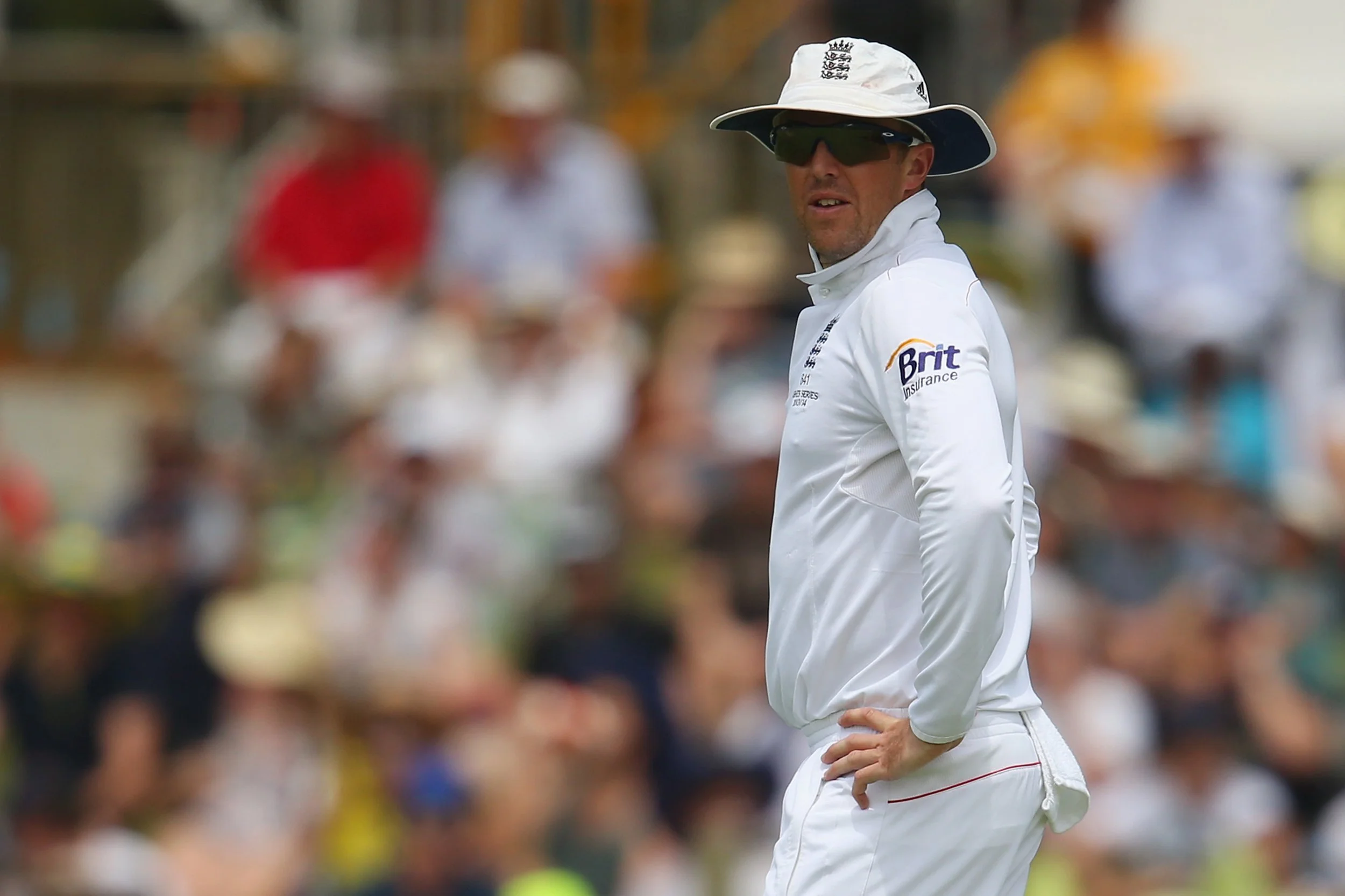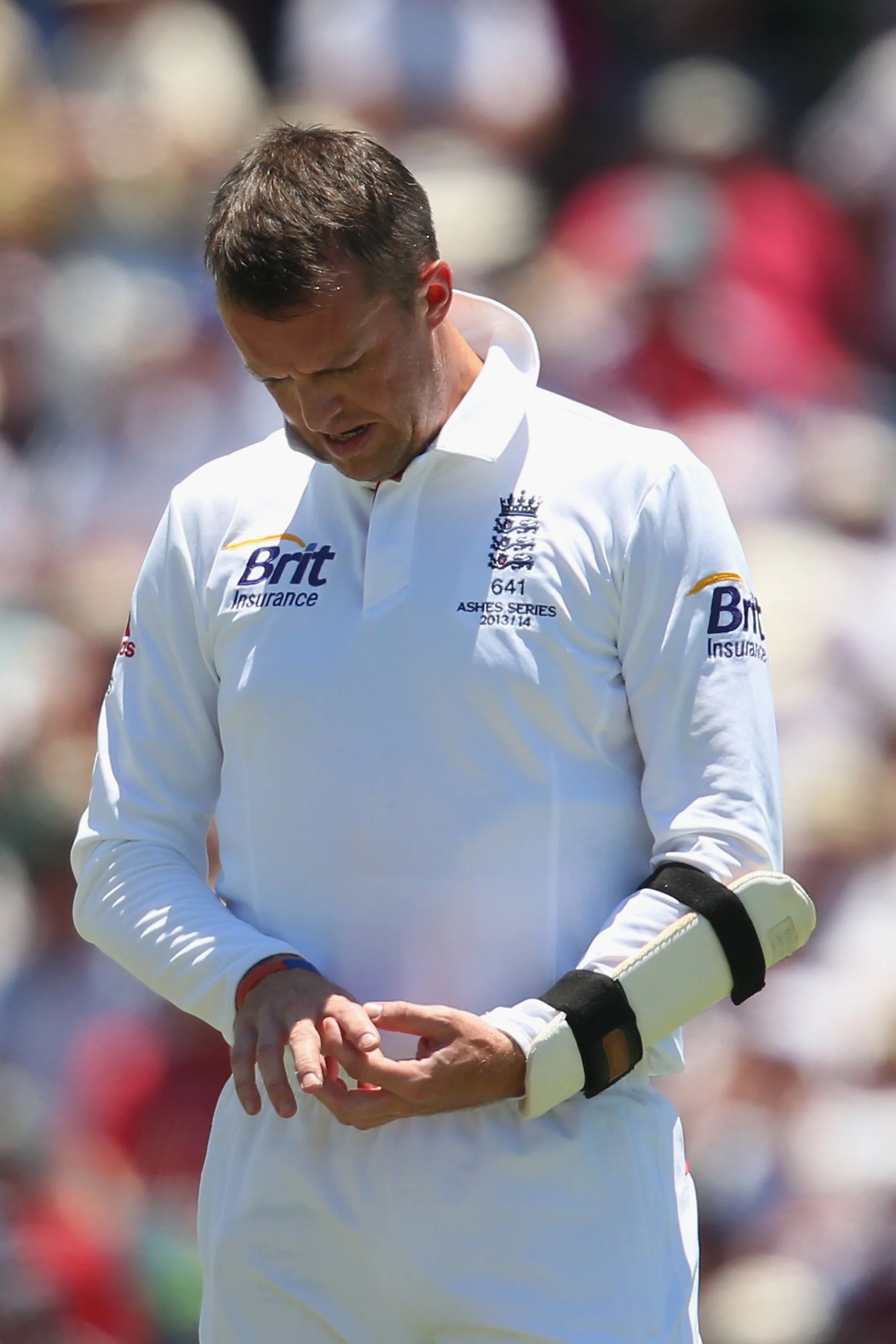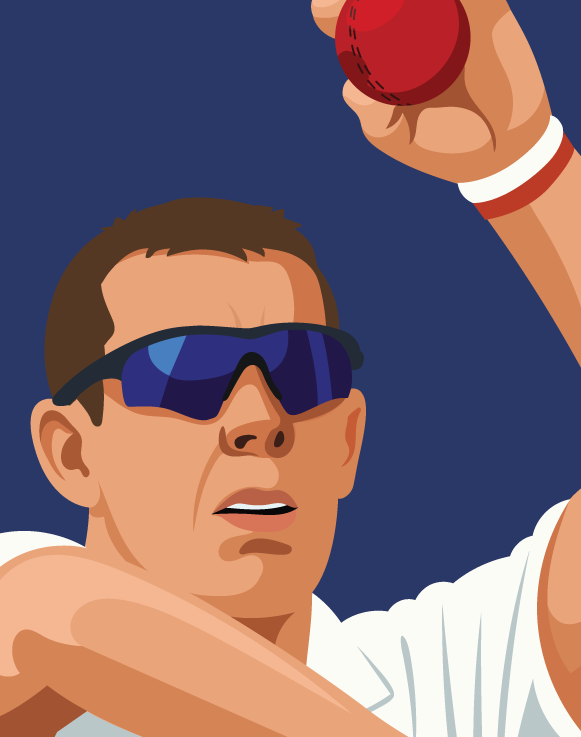“The Intensity is Unenjoyable…”
Bowling spin in Australia in an Ashes series – how hard can it be? It’s all about mindset, that’s if you’re talking to former England great and serial urn-lifter Graeme Swann. And all about starting well if you’re national treasure, Ashley Giles, one of the heroes of 2005. Pitch caught up with two of England’s star turns, as it were.
INTERVIEWS: ANDY AFFORDBetween 2009 and 2013, Graeme Swann played 18 Ashes Tests, finishing on the winning side eight times. In total, he took five wickets on three occasions against Australia, playing in four different series: 2009 (in England), 2010-11 (in Australia), 2013 (in England), and 2013-14 (in Australia) and was part of the winning squad in three of these series. Them being in 2009, 2010-11, and 2013. Ongoing problems with a long-term elbow problem meant he did not finish the 2013-14 series, retiring mid-way during what was a crushing England defeat, one that unseated the coaching team and led to the usual levels of soul searching about systems, fixture lists, the County Championship and talent identification generally.
Swanny there, illustrated by STENCIL’s Dan Wilkinson. Never looked so good.
Pitch: Tell me about the Ashes in Australia – what do I need to know?
Graeme Swann: I actually think it starts before you get there. For me, it would start in the back of the chauffeur-driven car on the way to Heathrow. Obviously, anyone would feel like they’re living the dream talking to the chauffeur on the M1 south, but you realise that as you’re on your way to Australia, even then, that it’s a massive mental game. Where I’d be excited about the prospect of going out to India and possibly being ‘the man to win matches’ – which suited my mindset so much more – the prospect of going to Australia sometimes meant just keeping an end going when the seamers weren’t operating. That wouldn’t normally be the kind of thing to get me buzzing.
“Ex-players out there in the middle. All looking at you with a mix of scorn and hatred”
Pitch: Can you remember your first Ashes Test?
GS: It was at Cardiff. I can remember that you could barely get both teams on the outfield for warmups because there were so many ex-players out there in the middle. All looking at you with a mix of scorn and hatred – all thinking that you either didn’t deserve to be out there, or that it was all much better in their day.
Pitch: Nice…
GS: It just makes you realise how invested people are in the series. It’s the same in the press conferences. It feels like there are far more people than the usual familiar faces. It’s that kind of contest.
Pitch: Ok, it’s Day 1 of the first Test in Australia, how are you feeling going into it as the team’s premier spin bowler?
GS: Bowling spin in Australia is a different kettle of fish than anywhere else in the world. The pitches have so much more bounce and are so true – for one thing. And also, they don’t really wear like pitches elsewhere in the world. The only time I took five wickets (5-91 from 41.1 overs) in an innings was at Adelaide during the second Test in 2010. Australia picked a left-arm fast bowler named Doug Bollinger and during our only innings, he bowled 29 overs from one end and created a dinner plate-sized hole outside the righthander’s off-stump for me to bowl into. This was now, all of a sudden, different gravy.
I actually think that the first day of the series is a pretty good time to bowl. Everyone knows it’s a big deal. No-one wants to fuck up – particularly the batters – so players can be more conservative than they would normally. That’s why I particularly admire the likes of Australia’s Matty Hayden from back in the day. It takes real balls to take the game on from the start. His bullish approach had the effect of really settling his team down.
A well-worn Graeme Swann looks at his finger during day three of the Third Ashes Test at WACA in 2013.
Pitch: So what do you think is the key to getting a toe hold in the series for a spinner?
GS: A lot of it depends on whichever side gets on top. Because if your team’s fast bowlers are dominating it’s definitely the chance to pick up wickets on the back of that. When we were winning matches in 2010 it happened for me, and when Mitchell Johnson was scrambling everyone’s brains in 2013 it happened for Nathan Lyon.
Pitch: That all still sounds pretty hard going?
GS: It’s definitely a difficult place to bowl spin, but it isn’t an impossible task. That’s because the Aussies will try and dominate the game, which always gives you a chance. I don’t necessarily believe that Australia are good players of spin, but they are good players of spin in Australia.
Pitch: And is there anything else to think about?
GS: Apart from that, you have to be patient. For me, a lot of the time – particularly across the first three days – was all about standing at second slip, waiting for the chance to do something. Waiting for the fast bowlers to start looking a bit less effective. Stood next to the skipper and the keeper, it felt like being part of the Barmy Army! But with the best possible seat in the house.
Pitch: And this time around – how do you think it will go?
GS: Individual performances aside, I think it boils down to our batting v their bowling. I think their bowling has the edge on ours, but our batting lineup is performing much better than Australia’s. I expect Joe Root to have a brilliant series. That the Aussies are talking him down – saying that he hasn’t scored a hundred in Australia – is just a statistical anomaly. A misnomer. And Joe is just getting better and better as he’s getting older. I also think that someone like Zak Crawley could have a real impact. I know he has a poor average for an opener, and has been pretty inconsistent, but he’s a great puller and driver and I don’t expect the Aussies to like bowling at him.
Ashley Giles played in the greatest Ashes series of the modern era, as a supporting cast member who ended up centre stage, playing a number of vital cameos during the summer of 2005. Key wickets in the fight-back win at Edgbaston and the match-winning runs at Trent Bridge, were followed by a key partnership – again with the bat – this time in ‘KP’s Test’ at the Oval. Patient, considered and trusted to do a good job on the field, Giles is the same off it. He’s also the current CEO at Worcestershire.
Pitch: Do you remember your first Ashes Test?
Ashley Giles: I do, but not particularly fondly…
Pitch: Edgbaston in 2001?
AG: It was. It didn’t go that well, as I remember.
Pitch: On dear…
AG: I had played the previous winter, in winning teams in Pakistan and Sri Lanka. But coming up against the Australian machine was definitely a bit chastening. We’d played a winter of slower, very technical, Test match cricket, and then were run over by what felt like an absolute juggernaut of a team.
Pitch: Can you talk us through what the specific challenges of playing Australia in their own back yard feels like?
AG: As intense an Ashes series feels in England, it goes up a notch in Australia. We started in Brisbane, which felt an absolute cauldron. There is always a lot of ‘incoming’, as it were. Whether that’s the crowd, the public, the media, or whatever, I’d say that the intensity is unenjoyable. It’s a case of hotel to training facilities to hotel to training – and as I said – with plenty of incoming fire.
“Nathan Lyon is a massive anomaly in terms of finger spinners doing well in Australia, I can’t see that changing”
Pitch: And on the field?
AG: Similar. And although we didn’t start well, I started pretty well on a personal level. I managed a long bowl in the warm-up game in Brisbane and felt in pretty good order. I was pretty happy with how it went, despite a guy named Martin Love making a double-hundred for Queensland, and keeping us in the field for most of the game. But that always suited me. And if you bowl with decent pace and accuracy you’re always in the game. Wherever you are in the world.
I took six wickets in the Test, though we went on to lose it. And as it turned out, Harmy (Durham & England paceman Stephen Harmison) broke my arm in the nets and that was me done.
Pitch: Tough break, as it were…
AG: Yes, it was. And I ended up only playing three Tests in Australia in my career. In two visits. But you can’t not start well as a team. That’s of paramount importance.
The King of Spain. Shades and all. You beauty.
Pitch: There seemed similarities between the US crowd at this year’s Ryder Cup and playing Australia at home – do you think that’s fair?
AG: I think so. Whether you’re playing, bowling, batting or just going about your business, the Aussies are pretty… blunt.
Pitch: Is that an added pressure you don’t expect?
AG: You expect it – they’re pretty ‘to the point’. I think the Australians consider it banter, but it’s not. It’s very raw.
Pitch: And this England team, how do you expect them to fare?
AG: I think they have as good a chance as England have had for a while. There has been a good amount of water under the bridge since the sides last played. The Australian attack without Pat Cummins is a downgrade, definitely. I also think that England’s batting is ahead of the home side’s. It’s definitely stronger than it has been for a while and an even contest.
Pitch: And do you see spin as being a factor?
AG: I think that Nathan Lyon is a massive anomaly in terms of finger spinners doing well in Australia, I can’t see that changing. A lot rests on keeping England’s fast bowlers fit and on the field.
Pitch: Pick the readers a couple of key elements to look out for?
AG: We have to manage Ben Stokes’ workload. To the point of needing the ball taking off him, if necessary. And Joe Root is England’s ‘leveller’. He sets the tempo for our entire batting order.
And I also think that the batting just can’t take on the short ball like they might want to. The grounds are all so big, we can’t get batters just having a go at balls banged in and holing out 80 metres away, in the deep. But, are they realistically going to change now? I guess we’ll soon see…
Ashley Giles on 2005 and all that
“There is still a special bond between us all. From me personally, it was the best and worst of summers. I hardly slept; such was the intensity. And it was only when it was all over that I realised that none of us were sleeping, as none of us spoke about it until it was done.
“I think it was probably a year after it all finished before I could watch the box set DVD, as it was back then. It put me straight back there. And it all takes a piece of you. That intensity, those highs and lows. I found it difficult.
“I think back to that game at Trent Bridge particularly, and being out there batting with Hoggy (Yorkshire, Leicestershire & England’s Matthew Hoggard) trying to scrape together those last few runs. And it felt as if it was only us two and the two Australian bowlers – Brett Lee and Shane Warne – that were playing. Only us four involved in the game at all. We were so focused it was as though we were playing with the sound turned down. And at the end of it – it was like a spell was broken – and the volume was back up. Never before or since.
“But as hard as it was – however much it takes out of you, and it does take it out of you, that level of pressure and scrutiny – it does give you something back. The ability to bounce back from anything.”





